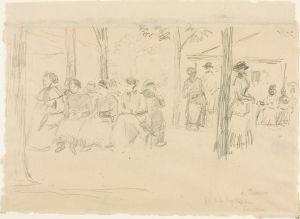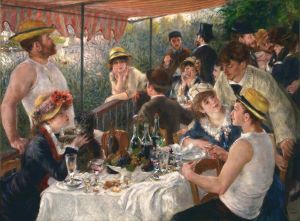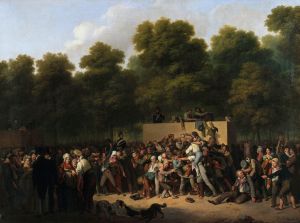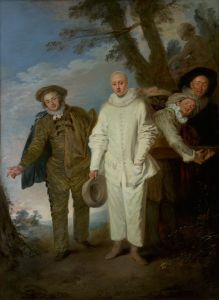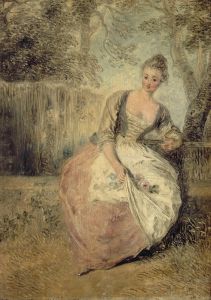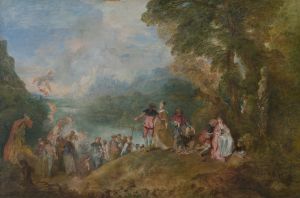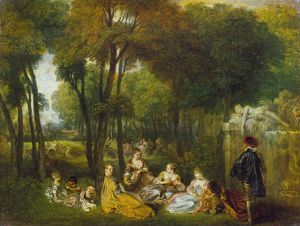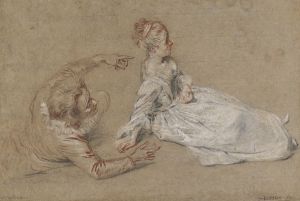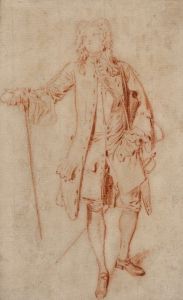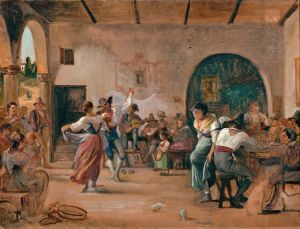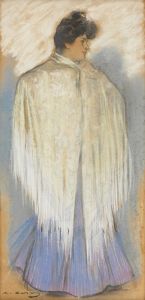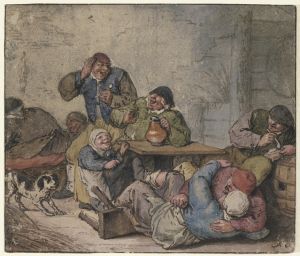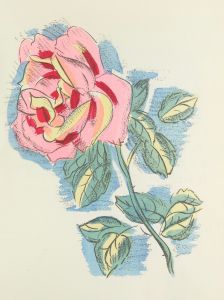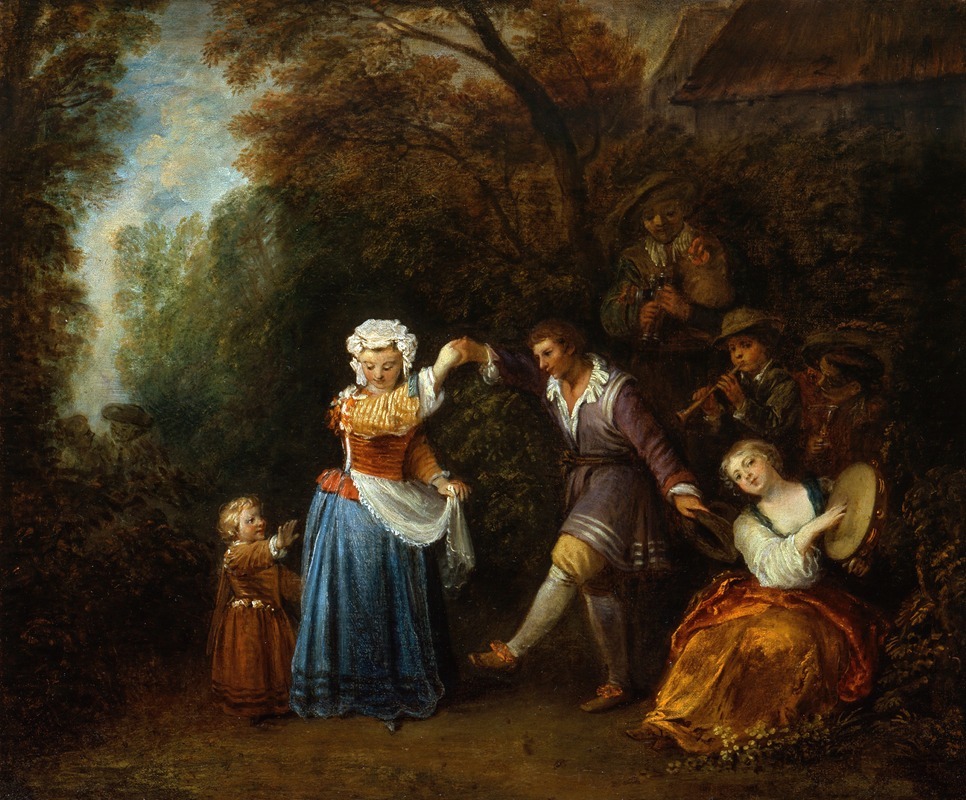
The Country Dance
A hand-painted replica of Jean-Antoine Watteau’s masterpiece The Country Dance, meticulously crafted by professional artists to capture the true essence of the original. Each piece is created with museum-quality canvas and rare mineral pigments, carefully painted by experienced artists with delicate brushstrokes and rich, layered colors to perfectly recreate the texture of the original artwork. Unlike machine-printed reproductions, this hand-painted version brings the painting to life, infused with the artist’s emotions and skill in every stroke. Whether for personal collection or home decoration, it instantly elevates the artistic atmosphere of any space.
"The Country Dance" is a painting by the French Rococo artist Jean-Antoine Watteau, created around 1710-1711. Watteau is renowned for his depictions of idyllic and pastoral scenes, often featuring elegantly dressed figures engaged in leisurely activities. This painting is a quintessential example of his style, capturing the essence of the Rococo period with its lightness, elegance, and playful subject matter.
In "The Country Dance," Watteau presents a scene of rural festivity, where a group of elegantly dressed men and women are engaged in a lively dance in a pastoral setting. The figures are depicted with a sense of grace and fluidity, characteristic of Watteau's work. The composition is dynamic, with the dancers arranged in a circular formation, creating a sense of movement and rhythm that draws the viewer into the scene.
The background of the painting features lush greenery and trees, providing a serene and picturesque backdrop that enhances the idyllic nature of the scene. Watteau's use of soft, pastel colors and delicate brushwork adds to the overall sense of lightness and elegance. The figures are dressed in contemporary 18th-century attire, with the women in flowing dresses and the men in coats and breeches, reflecting the fashion of the time.
Watteau's ability to capture the subtleties of human interaction and emotion is evident in "The Country Dance." The expressions and gestures of the figures convey a sense of joy and camaraderie, as they engage in the dance and enjoy each other's company. This focus on the pleasures of social interaction and the beauty of the natural world is a hallmark of Watteau's work and the Rococo style in general.
"The Country Dance" is also notable for its composition and use of space. Watteau skillfully balances the figures within the landscape, creating a harmonious and cohesive scene. The interplay of light and shadow adds depth and dimension to the painting, enhancing the sense of realism and immediacy.
Jean-Antoine Watteau's work, including "The Country Dance," had a significant influence on the development of the Rococo style and on subsequent generations of artists. His ability to capture the fleeting moments of beauty and pleasure in everyday life continues to be celebrated and admired.
Today, "The Country Dance" is housed in the collection of the Louvre Museum in Paris, where it remains a testament to Watteau's artistic genius and his contribution to the Rococo movement. The painting is a beloved example of 18th-century French art, appreciated for its elegance, charm, and the masterful technique of its creator.





